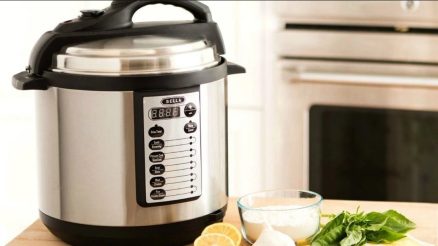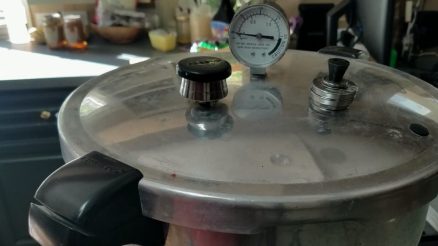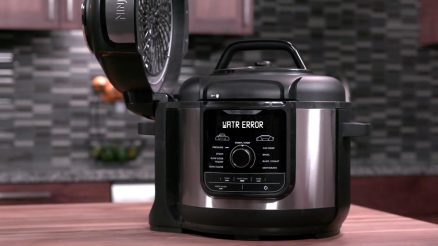Pressure cookers come in handy when you have to prepare your meal in a very short time if you are all on your own and have no one to help you out. But first, you need to know how to use them and avoid common problems by maintaining them well.
One of the most common complaints we hear from people using a pressure cooker is, “the pressure cooker won’t build pressure”!
Today we are going to discuss pressure cookers, the most common mistakes people make while using them, and the most common complaints. Also, the types of recipes you can cook with a pressure cooker.
Pressure Cookers and Cooking Uses of It
The pressure cooker operates on the simple idea of steam pressure. Most common dishes are cooked more quickly in a sealed pot with a lot of steam due to the high pressure that is created. They are efficient in terms of electricity consumption.
It is considered healthy to cook in a pressure cooker since they may reduce cooking times by up to 50 percent on average and effectively maintain nutrients.
A pressure cooker can
- Braise
- Stew
- Steam
- Boil
- Steam roast
- Poach
- Brown
- Roast food
These days, pressure cookers can also be used to bake! It takes only a few minutes to cook rice and even less time to prepare harder foods like beans and chickpeas.
See More: Can A Pressure Cooker Explode? How to Avoid Them
It works well for things like braised meats and roasts that require being tenderized. But stews, vegetables, meat, beans, and pulses are the things that people cook most in a pressure cooker.
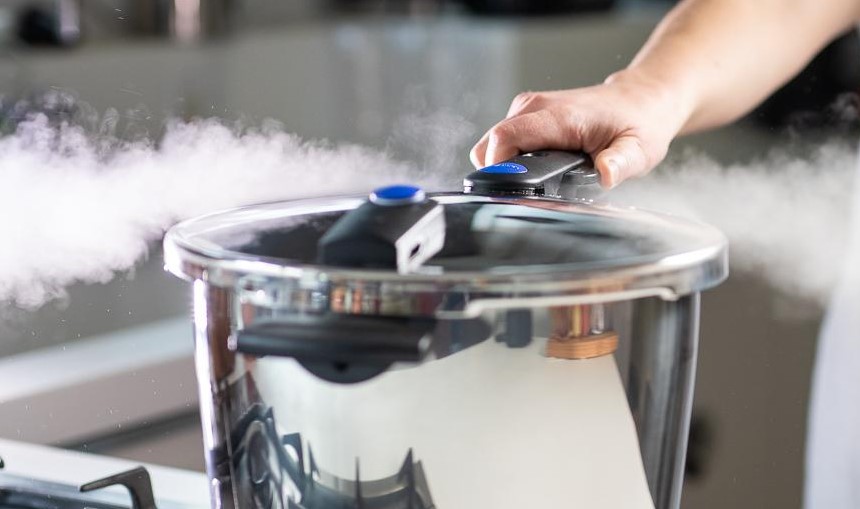
Pressure Cooker Won’t Build Pressure: 7 Reasons
Now, one of the common problems people face is that their pressure cooker is not building up pressure. What could be the possible reasons for this problem? Let us discuss them below.
1. The Lid is not Properly Closed
This simple problem can cause serious stress while cooking; now you may ask why so? This problem typically arises when the sealing ring or also known as the gasket is brittle, damaged, or unclean.
The sealing ring is one of the important items you should look at if your pressure cooker is having trouble reaching pressure despite the vent knob being in the correct position.
What is the sealing ring or gasket, and why is it so important? Well, as the name suggests, the gasket or the sealing ring supports the pressure cooker’s cover to efficiently seal it and ensures that the steam or pressure is building inside the device.
If your gasket wears out, your food won’t be cooked properly as the water vapor will be leaking out.
Possible Solutions to avoid this problem:
- After using the pressure cooker, make sure that the gasket is removed from the glass cover and cleaned thoroughly to avoid any kind of food or oil stuck inside.
- If you are replacing the gasket while attaching it to the lid, press it down into the ring rack and make sure it spins freely. This is how you’ll know it’s been reinserted correctly and the steam won’t run out.
- If you notice that the gasket has inflated too much, take the ring from the pressure cooker and run it under cold water to bring the temperature down so that it shrinks back to its original form. Replace the gasket in the ring holder, and hopefully, the pressure will build inside.
Note- Make sure the gasket or sealing ring is replaced at least once a year to guarantee that the seal stays tight each time you use your pressure cooker.
2. Inadequate Amount of Liquid Inside the Cooker
The pressure cooker won’t be able to produce the necessary pressure if the liquid is too thick, too little, or too much. So, why is that? If there is too little liquid inside the cooker, you may see a burn or the lid not closing properly.
Also, if too much liquid is inside the cooker, then there won’t be enough room for the steam to build inside to create pressure.
Solutions:
- If the liquid is too thick, for example, if you’re working with sauce, simply open the lid and pour more water inside. This will loosen the sauce, allowing the steam to flow more easily.
- To avoid overfilling or underfilling your pressure cooker with liquid, use the same criteria you would while filling it with food: no more than two-thirds full.
3. The Pressure Valve is either Dirty or Leaking
The function of the pot might be compromised by a dirty pressure valve. If you tend to wait too long to clean, your pressure valve may have food particles clinging to it.
Furthermore, leaking can occur if the pressure valve is set to vent rather than the seal. This will force steam to escape through the valve, resulting in no pressure build-up within the pot itself.
Solutions:
- Inspect the liquid level in the pressure cooker and replace the lid after adding enough water to cover the bottom completely. Then make sure the pressure valve is tightly latching before switching it to sealing.
- Clean with water, then wipe the pressure valve after using it a maximum of twice to avoid unwanted food particles sticking to it.
4. Food Stuck on the Bottom of the Cooker
While cooking, if the food clings to the bottom and continues to burn due to inadequate liquid, it might prevent the liquid from properly circulating to steam the food in the pressure cooker.
Solutions:
- Firstly, remove the pressure cooker cover with care and set it aside. Carefully remove the chunks of sticky food from the bottom of the pressure cooker using a stainless or wooden spoon, and then restore the food into the pot.
- To ensure the water you have added earlier may not have been evaporated during the pressurization procedure. Add some more water or any other liquid as needed to guarantee that the meal does not become stuck again during cooking. Then replace the cover and lock it down to start re-pressurizing your pressure cooker.
5. Wrong Inner Pot
The inner pot plays a crucial role in any pressure cooker. All the pressure cookers come in different sizes, as well as their inner pot too.
So, a wrong inner pot will cause the cooker to have an unsealed condition which can lead to failure of getting the required pressure.
Also, a breakage in the inner pot is faulty for not letting the pressure cooker build pressure.
Solutions:
- Always use the same inner pot that comes with the pressure cooker to avoid any leakage in the cooker. If you still face vapors getting leaked from the cooker, check the size of the inner pot.
- Get a replacement whenever you get breakage in the inner pot. A faulty/broken inner pot will cause leakage, and the pressure cooker will never function the way it should.
6. Putting Frozen Meats in the Cooker
Frozen meats are mostly hard solids that tend to take more time to be boiled in a pressure cooker. If you want to put frozen vegetables in the pressure cooker, it’s not a matter of concern.
But meats have thicker cells that need more time and pressure to be cooked properly. Otherwise, putting frozen meats in the pressure cooker also increases health risks.
Solutions:
- Let the meat melt ice from its body at room temperature, and only then put the meat into the cooker. So, if you don’t have time to wait, remove 1kg unit of meat before 1 hour of cooking as 1kg of meat takes only 1 hour to melt. If your meat package is around 3-4kg, it might take more than 2 hours.
- You can also use a bit of lukewarm water to soak the meat. It will make the melting process faster.
7. Inappropriate Heat
To create the needed pressure inside the cooker, the temperature should always be 212 degrees Fahrenheit. Anything less will not even create bubbles in the food of the pressure cooker.
Solutions:
- Start with high heat for creating pressure and then minimize the heat to the point you need to boil the food.
- Always make sure to check the recipe’s PSI. Most of the recipes require 15 PSI, and for this temperature, you will need an estimated 250 Fahrenheit.
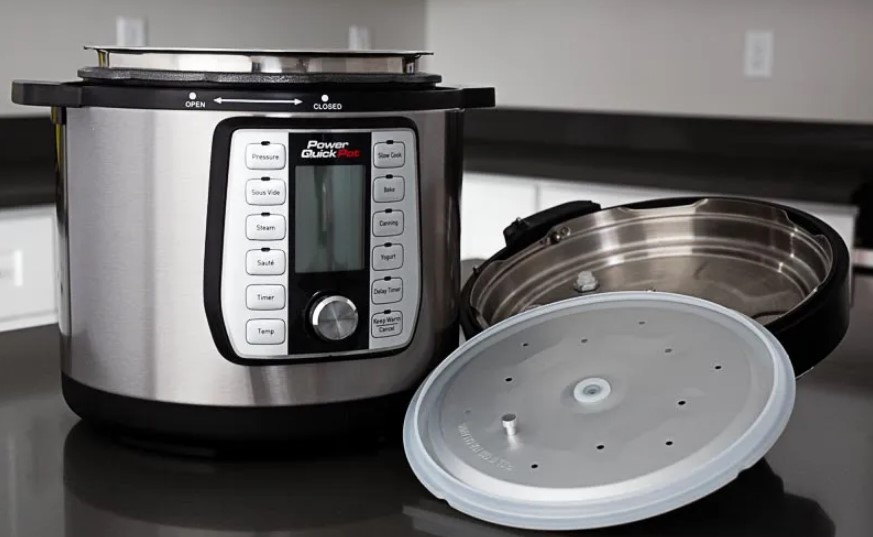
General Maintenance Tips for A Pressure Cooker
- To ensure proper safety, replace parts of your pressure cooker if you notice it wearing out or leaking
- Read the instruction manual that comes along with your pressure cooker, and do not throw it away later because, trust me, it does come in handy.
- Release the pressure inside the cooker in a safe manner instead of abruptly removing the lid. This may avoid any possible accidents from taking place.
- Clean the pressure cooker properly instead of reusing it without washing or storing food inside it for a long while.
- Fry the meat or cook it a little before adding it to your pressure cooker for maximum flavor.
- Maintain the minimum and maximum marks marked inside the interior walls of your pressure cooker.
Frequently Asked Questions [FAQ]:
Which settings do I use for my pressure cooker?
| Pressure | Setting | PSI | kPa | Bar |
| High | 1 | 6 to 8 | 40 to 55 | 0.4 to 0.55 |
| Low | 2 | 13 to 15 | 90 to 100 | 0.9 to 1 |
How do I know when to start measuring the cooking time?
The suggested cooking time for traditional pressure cookers begins when the preset setting is achieved. When the green ring appears on the pressure cooker, your cooking time begins.
Is it okay to wash pressure cookers in the dishwasher?
The pot may go straight into the dishwasher. The lid may also be washed in the dishwasher if the main valve, rubber gasket, and lid handle are removed. These pieces are easy to clean by hand with warm water and a gentle brush.
When does my pressure cooker need maintenance?
Natural wear and tear affect all gaskets. All pressure cooker gaskets should be replaced after 2 years or 400 uses to retain peak performance.
Which types of food should I cook on my pressure cooker?
Specific cooking durations depend on the size and amount of the meal being cooked. The cooking periods for various dishes are outlined in your pressure cooker instruction manual.
Conclusion
Pressure cookers come with flexible features for homeowners, single people, or food business persons. But they also come with issues, including over-pressurization, inability to build pressure, or escaping vapors.
Since we’ve discussed why your pressure cooker won’t build pressure and how to fix them, you might have already fixed your problem.

